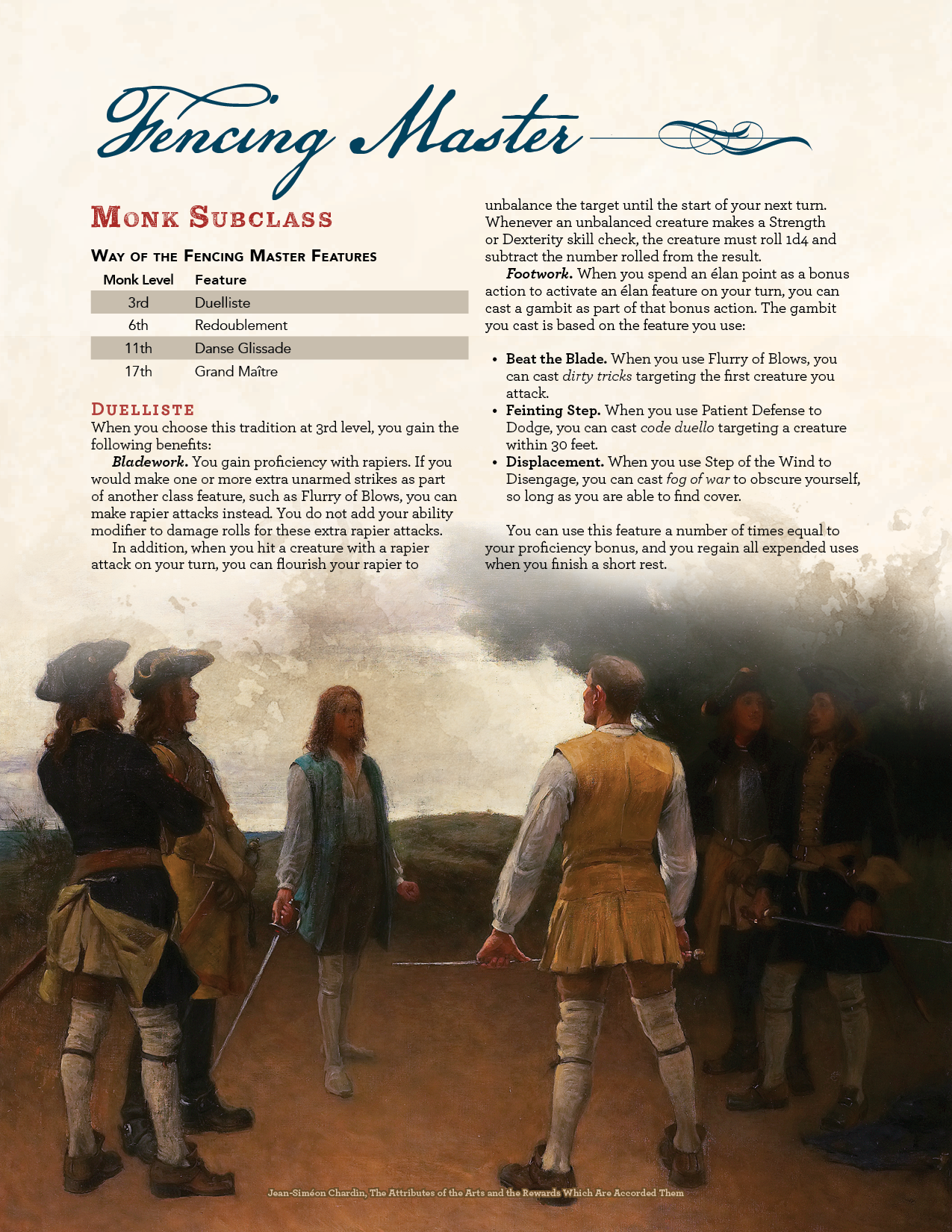Fencing Master
The shift towards fencing as a sport rather than as military training happened from the mid-18th century, and was led by Domenico Angelo, who established a fencing academy, Angelo's School of Arms, in Carlisle House, Soho, London in 1763. There, he taught the aristocracy the fashionable art of swordsmanship. His school was run by three generations of his family and dominated the art of European fencing for almost a century.
He established the essential rules of posture and footwork that still govern modern sport fencing, although his attacking and parrying methods were still much different from current practice. Although he intended to prepare his students for real combat, he was the first fencing master to emphasize the health and sporting benefits of fencing more than its use as a killing art, particularly in his influential book L'École des armes (The School of Fencing), published in 1763.
Source: Wikipedia
A twist on the standard Monk subclass, Way of the Fencing Master combines swordfighting techniques with the noble demeanor of a historical grandmaster, often found in the courts of kings and emperors in the 17th and 18th centuries. A Fencing Master would be a paragon of refinement and athleticism, often opening schools that taught dance, chess, courtly languages, and even the classics. All of the effects and ability names here were designed working with a fencing instructor.
As a Monk subclass, Fencing Master replaces the ki resource with élan, which represents vitality, panache, and honorable determination. I'm encouraged to see WotC signal that Monk in the OneD&D playtest will move away from an orientalist aesthetic and toward historical martial arts styles, and I think they may take a similar approach in the next playtesting packet.
GMBinder Link: Way of the Fencing Master




